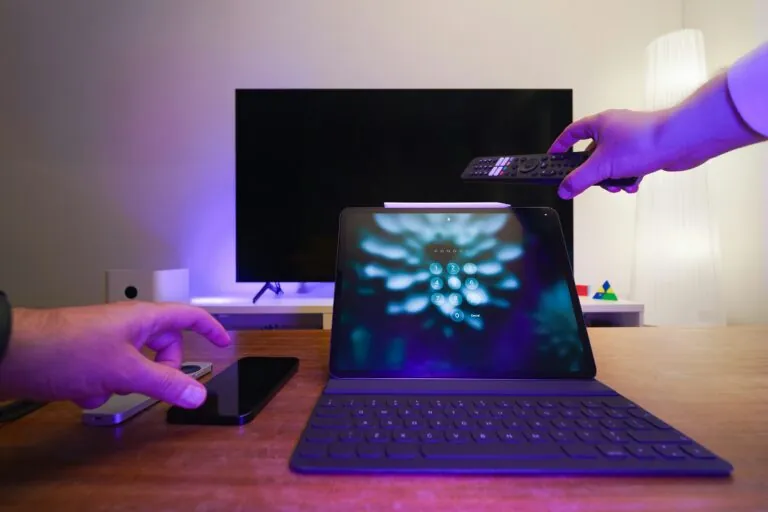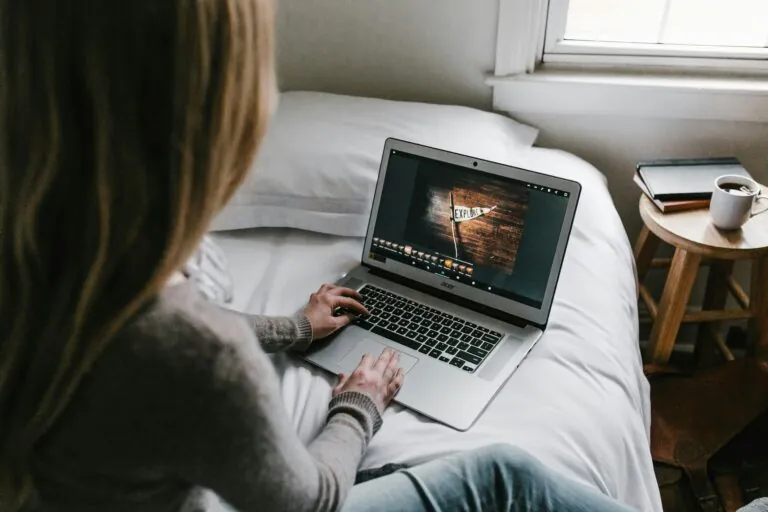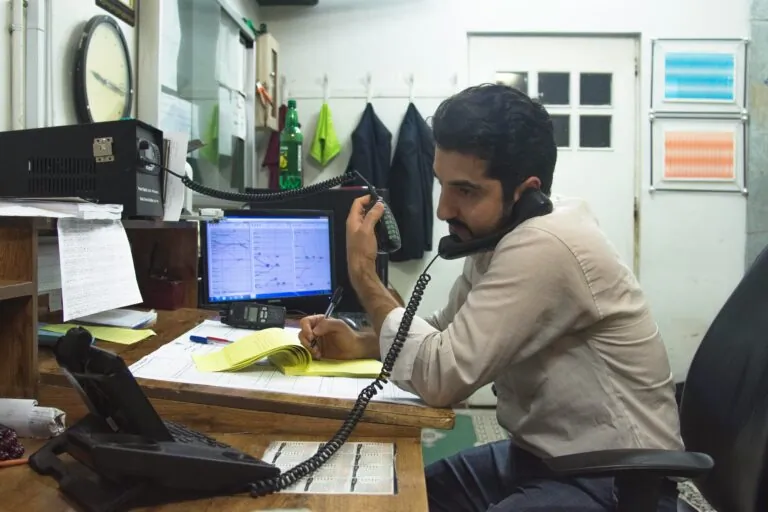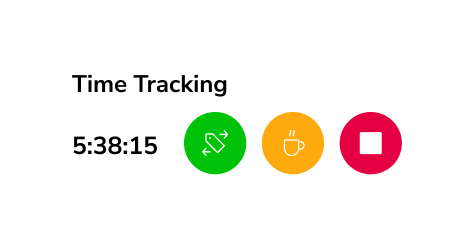Is Multitasking Really Good for Your Productivity?
2025
It’s Monday morning. You’ve got a coffee in one hand, your inbox is exploding with unread emails, Slack notifications popping up, and your phone is buzzing with texts. You’re toggling between a Zoom call, drafting a report, and trying to remember what that one coworker asked for last Friday. Sound familiar?
We live in a world that celebrates multitasking. We wear it like a badge of honor, proof that we’re hustling, grinding, getting things done. But what if I told you that multitasking is actually stealing your productivity rather than boosting it? What if the very thing you’re relying on to get ahead is what’s keeping you stuck?
In today’s hyper-connected, always-on culture, multitasking feels necessary. But beneath the surface, I think it’s a trap. A productivity killer dressed up as efficiency. And chances are, it’s costing you more than you realize.
Let’s break down why multitasking isn’t the superpower you think it is and what to do instead.
What Is Multitasking, Really?
Before we can dismantle multitasking, let’s get clear on what it actually is. Most of us think of multitasking as handling multiple things at once. Answering emails while listening to a meeting. Writing a report while texting. Cooking dinner while helping the kids with homework.
But here’s the thing: your brain isn’t truly doing multiple things simultaneously. What it’s really doing is switching rapidly between tasks. And every switch comes with a cognitive price.
True multitasking, like walking and chewing gum, only works when the tasks use different parts of the brain and don’t compete for the same mental resources. But when both tasks require attention, problem-solving, or memory, your brain has to toggle back and forth, splitting its focus and slowing everything down.
Think of your attention like a spotlight. Sure, you can swivel it quickly from one thing to another. But you can’t shine it brightly on two separate targets at the same time. And every time you shift it, there’s a lag as your brain readjusts. That lag adds up.

Photo by Jakub Zerdzicki on Unsplash
The Science Behind Multitasking and Productivity
A study by Patrick P. Weis and Wilfried Kunde in 2024, published in Scientific Reports, confirmed that switching between tasks leads to measurable cognitive costs, reducing efficiency and increasing errors. They found that even brief task switches impair focus and slow performance.
The study highlights that our brains are not wired to handle multiple attention-demanding tasks at once. Minimizing task switching is key to improving productivity and maintaining cognitive clarity.
In other words, the more you multitask, the worse you get at it. It’s like training your brain to be distracted.
Imagine trying to write a thoughtful email while hopping between Slack threads and scrolling Instagram. Not only will it take you longer, but the quality of your writing will suffer. You’ll miss details, overlook mistakes, and probably forget half of what you were trying to say.
The Myth of Doing It All
So why do we keep doing it? If multitasking makes us slower, dumber, and more error-prone, why is it so hard to quit?
Part of it is cultural. We live in a world obsessed with speed, optimization, and hustle. Somewhere along the way, being busy got confused with being productive. And multitasking feels busy. It feels like we’re working harder, doing more, juggling it all.
We’ve also been sold the idea that multitasking is a skill, something we should aspire to master. Job listings even list it as a requirement: “Must be able to multitask in a fast-paced environment.” But what if that’s a recipe for burnout, not success?
Here’s the uncomfortable truth: multitasking is often a cover for distraction. It gives us a false sense of progress while keeping us stuck on the hamster wheel of shallow work. We’re reacting, not creating. Responding, not strategizing. Checking boxes, not moving the needle.
It’s no wonder so many people end their day feeling drained but wondering what they actually accomplished.
Multitasking at Work: The Hidden Costs
Let’s zoom in on the workplace. Multitasking productivity is one of the biggest myths sold in professional environments. Open-plan offices, endless notifications, and back-to-back meetings all encourage constant context switching.
But the cost is high. Every interruption, every switch between tabs or apps, breaks your concentration.
A study by Professor Gloria Mark in 2008 at the University of California found it takes an average of 23 minutes and 15 seconds to regain focus after an interruption. This means every distraction pulls valuable time and attention away from meaningful work. Multiply that by multiple interruptions a day, and the productivity loss adds up fast. Minimizing distractions is crucial for protecting deep, focused work.
Think about this the next time you’re juggling emails while working on a client proposal. Multitasking doesn’t just slow you down, it makes you worse at your job.
It also creates emotional fatigue. Your brain wasn’t designed for nonstop switching. Over time, that mental load leads to stress, irritability, and burnout. You may think you’re keeping up, but under the surface, you’re quietly draining your cognitive reserves.
In the end, multitasking productivity is a contradiction. The more you try to do at once, the less effective you become.
The Attention Residue Effect
Have you ever noticed how hard it is to dive deep into a task right after leaving another? That sticky feeling in your brain, like you’re mentally still halfway in the last conversation or project, is called attention residue.
Attention residue happens every time you switch tasks. A little part of your focus stays stuck on what you were just doing, even as you try to start something new. It’s like your brain’s tab hasn’t fully closed. This leftover attention makes it harder to focus, slows down your thinking, and drags down the quality of your work.
A study by Sophie Leroy and Theresa M. Glomb in 2018, published in Organization Science, found that attention residue reduces performance on subsequent tasks by up to 25 percent.
They discovered that when individuals switch tasks without fully disengaging from the first, lingering focus impairs new work. Their research highlights how task switching drains attention and lowers effectiveness.
The more frequently you switch, the more your focus gets scattered.

Photo by Andrew Neel on Unsplash
Why Multitasking Feels Good (But Isn’t Good for You)
The answer lies in our brain chemistry. Every time you check a new notification, jump into a different task, or respond to a message, your brain releases a little hit of dopamine.
Dopamine is the feel-good chemical that rewards novelty. It’s the same reason we can’t stop scrolling Instagram or refreshing our inbox. Our brains are wired to seek out new and shiny things. Multitasking feels exciting because it keeps feeding us small bursts of novelty and reward.
But while it feels satisfying in the moment, it’s actually pulling us away from deeper, more meaningful work. Like snacking on candy all day instead of eating a real meal, multitasking gives you empty calories for your brain. You stay busy but unfocused, active but unproductive.
This creates a dangerous cycle. The more we multitask, the more addicted we become to the short-term buzz. And the harder it becomes to tolerate long stretches of quiet, focused work. Our attention span shrinks, and deep work feels harder and harder.
Multitasking and Stress: A Toxic Combo
Beyond making you less productive, multitasking also raises your stress levels.
Why? Because your brain has to work overtime every time it switches gears. Imagine driving a car that keeps shifting between first and fifth gear. Eventually, the engine wears down. Your brain works the same way. The constant shifting exhausts your mental resources, leaving you frazzled and overwhelmed.
Not only does this make you feel worse during the workday, but chronic stress from multitasking can impact your sleep, immune system, and emotional well-being. It’s not just your productivity that suffers. Your health takes a hit too.
Multitasking creates a false sense of urgency. You feel rushed, behind, and pressured to keep up with everything. But in reality, you’re the one setting the chaotic pace by trying to juggle too much at once. Slowing down to focus on one thing at a time isn’t lazy. It’s a smarter, healthier way to work.
Does Multitasking Work for Anyone?
You might be wondering: aren’t some people naturally good at multitasking?
A study by Jason M. Watson and David L. Strayer in 2010, published in Psychonomic Bulletin & Review, identified a rare group of individuals termed “supertaskers,” comprising only 2.5% of participants.
These individuals demonstrated the ability to perform multiple attention-demanding tasks simultaneously without performance decline. The study suggests that, unlike the majority, supertaskers possess unique cognitive control that allows efficient multitasking.
Supertaskers can handle multiple complex tasks with little decline in performance. But for the other 97.5% of us, multitasking doesn’t work. It slows us down, increases errors, and drains our mental energy.
If you’ve ever thought, “I’m great at multitasking,” chances are you’re not. The people who think they’re the best at it are often the worst performers. It’s a cognitive blind spot that makes multitasking seem like a strength when it’s actually a weakness.
Instead of trying to join the ranks of the supertaskers, it’s smarter to build systems that reduce the need to multitask at all. Single-tasking isn’t a step backward. It’s a leap forward for focus and productivity.
Single-Tasking: The Underrated Secret Weapon
If multitasking drags you down, single-tasking is the cure. Focusing on one thing at a time allows your brain to go deeper, work faster, and produce better results.
Single-tasking lets you enter what psychologist Mihaly Csikszentmihalyi calls “flow.” Flow is that magical state where you’re fully immersed, time disappears, and you’re doing your best work. But you can’t get there if your attention is constantly splintered.
When you single-task, you reclaim control over your time and energy. You stop reacting to every ping and interruption. You give your brain space to think, create, and solve problems at a higher level.
Think about the last time you felt completely absorbed in a project. Chances are, it wasn’t while juggling five other things. It was when you gave your full attention to one task and let everything else fade into the background.
Building the habit of single-tasking takes practice, especially in a world full of distractions. But the payoff is worth it. Higher quality work. Less stress. More satisfaction. And ironically, you’ll often get things done faster by slowing down and focusing.

Photo by Javad Esmaeili on Unsplash
Strategies to Stop Multitasking and Stay Focused
If you’ve been trapped in the multitasking cycle for years, breaking free can feel tough. But with the right strategies, you can train your brain to focus again and boost your productivity without the chaos.
#1 Set Clear Priorities for Your Day
Start by deciding what the most important task is before checking emails or messages. Write it down and commit to tackling it first, so your brain focuses on what truly matters, not just what feels urgent.
Lock this in by reading our 8 Best Methods of Organizing Time.
#2 Block Time to Protect Your Focus
Next, try time blocking. Block out chunks of your calendar for specific tasks and treat those blocks like unmovable appointments. For example, schedule 9 a.m. to 11 a.m. for writing, and don’t allow meetings or calls to interrupt. Time blocking protects your deep work and makes it harder for distractions to creep in.
#3 Use the Pomodoro Technique
Another powerful tool is the Pomodoro Technique. Set a timer for 25 minutes and focus on one task until the timer rings. Then take a five-minute break before starting the next round. This keeps your brain fresh while building focus stamina over time, making deep work more sustainable.
#4 Turn Off Notifications to Minimize Distractions
Finally, turn off as many notifications as possible. Every ping, buzz, and banner is a trigger to multitask. Silence your phone, close extra tabs, and create an environment that supports uninterrupted work. You’ll be surprised how much calmer and clearer your mind feels when it’s not constantly reacting to alerts.
The Role of Environment in Reducing Multitasking
Your environment plays a huge role in whether you multitask or focus. If your desk is cluttered with papers, your desktop filled with tabs, and your phone within arm’s reach, buzzing every few minutes, staying focused will feel like an uphill battle.
Start by decluttering your physical and digital spaces. A clean desk signals to your brain that it’s time to work. Likewise, closing unused browser tabs removes visual distractions that tempt you to click away from your main task.
If you work in a noisy environment, noise-canceling headphones or instrumental music can help create a bubble of concentration. Some people swear by white noise or ambient sound playlists to drown out background chatter.
Don’t underestimate the power of tiny environmental tweaks. Something as simple as facing your desk away from the TV or placing your phone in another room can make the difference between focused work and a scattered, multitasking mess.
Multitasking in Personal Life: Is It Hurting Relationships?
Multitasking doesn’t just sabotage work productivity. It sneaks into our personal lives too, often with painful consequences. How many times have you half-listened to a loved one while scrolling your phone? Or nodded absentmindedly while mentally replaying tomorrow’s to-do list?
This kind of divided attention is so common that there’s even a term for it: “phubbing,” short for phone snubbing. It’s the act of ignoring someone in favor of your phone. And studies show it damages trust, lowers relationship satisfaction, and increases feelings of rejection.
When we multitask conversations, we’re not really connecting. We’re hearing words but missing meaning. We’re physically present but emotionally absent. Over time, this erodes intimacy and weakens bonds with the people who matter most.
Try practicing “monotasking” in your relationships. When you’re with your partner, friend, or child, put the phone away. Close the laptop. Make eye contact. Give them your full attention, even if just for a few minutes. These small moments of undivided presence create powerful connections that multitasking can never replicate.
Track Your Time to Build Awareness
Understanding how you allocate your time is crucial for enhancing focus and productivity. Utilizing a productivity tracker can provide valuable insights into your work habits. By monitoring the duration spent on various tasks and projects, you can identify patterns, recognize areas where time may be lost, and make informed adjustments to your workflow.
When Multitasking Makes Sense
Not all multitasking is bad. Some activities naturally pair well because they don’t compete for the same mental resources. Folding laundry while listening to a podcast. Walking the dog while talking on the phone. Chopping vegetables while chatting with family.
These low-stakes combinations can make chores more enjoyable or help you squeeze more out of your time without sacrificing quality or focus. The key is knowing when multitasking works and when it backfires.
A rule of thumb:
Multitask only when one task is largely automatic and doesn’t require deep thought. As soon as both tasks need attention, problem-solving, or creativity, switch back to single-tasking mode.
Final Thoughts: Redefining Productivity
Multitasking productivity sounds great on paper. But in practice, it’s mostly a myth. The more we try to do everything at once, the less we actually get done. The quality drops. The stress rises. And we end up exhausted, frustrated, and wondering why we feel so busy but so unproductive.
True productivity isn’t about doing more tasks in less time. It’s about doing the right tasks, at the right time, with your full attention. It’s about depth, not speed. Intention, not chaos.
Next time you feel tempted to multitask, pause. Ask yourself: “Is this helping me, or hurting me?” Chances are, you’ll find that slowing down and focusing on one thing at a time is the real shortcut to getting ahead.
By embracing single-tasking, setting boundaries, and creating an environment that supports focus, you can reclaim your time, energy, and peace of mind. Productivity isn’t about juggling. It’s about choosing what matters most, and giving it your best.


